by David von Hippel and Peter Hayes
21 September 2015
I. Introduction
In this paper, we describe the DPRK energy economy, including a description of recent trends in DPRK energy supply and demand. We then summarize the DPRK’s energy security situation and energy sector needs, along with a brief description of potential regional/international cooperation options for providing energy sector development assistance to DPRK. These options include conventional energy, energy efficiency, and renewable energy. They are followed with more general approaches to engagement and an example “package” of cooperation measures. These non-nuclear options are benchmarked to a quantitative estimate of the net present value of the two light water reactors that were to be provided in the US-DPRK Agreed Framework but never completed, as a reasonable benchmark, followed by a review of the DPRK nuclear energy sector and related potential cooperation options and issues related to the DPRK domestic pilot light water reactor and enrichment programs. We conclude by highlighting key insights and opportunities for increasing the DPRK’s energy security in the context of regional energy development in which all states have a stake.
This report was initially written for the Nautilus-CIIS Workshop on Comprehensive Security Settlement and DPRK Nuclear Issue, Beijing, January 23, 2014.
David von Hippel is a Nautilus Institute Senior Associate working on energy and environmental issues in Asia, as well as on analysis of the DPRK energy sector.
Peter Hayes is Professor, Centre for International Security Studies, Sydney University, Australia; and Director, Nautilus Institute, Berkeley, California.
II. Special Report by David von Hippel and Peter Hayes
Energy sector cooperation with the DPRK in support of a regional Nuclear Weapons Free Zone
1 Introduction
A durable nuclear weapons free zone (NWFZ) in Northeast Asia (NEA) requires securing not only nuclear weapons-related fissile materials, but also fissile materials in nuclear spent fuel from nuclear power reactors. Management of nuclear spent fuel is closely associated with energy security in all NEA countries, including the Democratic People’s Republic of Korea (DPRK). Issues related to nuclear weapons in Northeast Asia cannot be addressed without addressing energy security issues that arise from each state’s civilian and military nuclear programs. A regional approach to both energy and nuclear materials security is therefore required, and could have positive spillover effects beyond a NWFZ.
The purpose of this paper is to offer context, ideas, and options for potential bilateral, trilateral, or multilateral international cooperation on the DPRK’s energy sector development in general, and its nuclear energy sector development in particular, to complement activities under a regional NWFZ agreement.
To this end, we offer in this paper:
- An outline of DPRK energy economy, including a description of recent trends in DPRK energy supply and demand.
- A summary of the DPRK’s energy security situation and energy sector needs, along with a brief description of potential regional/international cooperation options for providing energy sector development assistance to DPRK, including in the areas of conventional energy, energy efficiency, and renewable energy, together with some thoughts on general approaches to engagement and an example “package” of cooperation measures.
- A discussion of the DPRK nuclear energy sector and related potential cooperation options and issues related to the DPRK domestic pilot light water reactor and enrichment programs.
- A conclusion highlighting key insights and opportunities.
2 DPRK Energy Economy
A brief sketch of the DPRK energy sector, and some of its problems, is provided below. Much more detailed reviews/estimates of energy demand and supply in the DPRK in 1990, 1996, and particularly in 2000, 2005, and 2008 through 2010, are available in other Nautilus reports.[1]
2.1 DPRK Energy Resources and Supply Infrastructure
The major primary energy resources currently used in the DPRK are as follows:
- Coal, almost all of which is domestically produced. DPRK coal reserves are estimated at up to 15 billion tonnes (ROK Central Bank estimate), corresponding to hundreds of years of supply at recent and current production levels. Recent years have seen a considerable increase in DPRK coal exports to China, with over 12 million tonnes of coal shipped in 2012.
- Petroleum, including imported crude oil (about 0.5 million tonnes per year in recent years, imported almost exclusively from China) and a somewhat smaller amount of imported refined petroleum products (an estimated 0.3 to 0.4 million tonnes) sourced from several nations, but mostly China and Russia (see Figures 1 and 2, below).
- Wood and Biomass, including fuel wood and commercial wood harvested from the DPRK’s extensive, but in some cases degraded, forest area, and crop residue biomass. Nautilus estimates place the DPRK’s annual harvest of wood at about 10 million tonnes, which represents about 40 percent more than estimated sustainable wood yields. Crop wastes add another 4 to 5 million tonnes/yr of biomass resources.
- Hydroelectric power from a number of hydroelectric plants situated along the major and smaller rivers in the DPRK. A number of sources suggest that the DPRK’s hydraulic resource is sufficient to provide about 10 GWe (gigawatts of electric power) of hydroelectric generation.
The DPRK has additional energy resources that are not yet widely used:
- Crude oil and natural gas resources, located mostly in offshore areas, have been only tapped in a limited fashion to date in onshore locations. Crude oil resources have been estimated at up to 12 billion barrels, with gas resources on the order of 30 billion cubic meters.
- Geothermal resources, in which the DPRK has shown an active interest of late, though the extent of geothermal resources in the DPRK are not well known.
- Wind power, though the average wind speeds in the DPRK are fairly modest, with the most favorable wind regimes located offshore and along the high ridges in the middle of the country. A DPRK wind resource estimate of 1.7 TWh/yr (terawatt-hours per year) corresponds to about 550 MWe of wind power at an assumed typical wind power capacity factor of about 35 percent.
- Solar energy resources, though the DPRK’s solar regime—an average of 1200 kWh/yr per square meter—is comparable to that of the ROK, Japan, and temperate areas of the United States.
- Tidal energy resources, which have been tapped to only a limited extent, with the major installation being the 500 kWe (electric kW) plant on the Nampo barrage, though proposals for much larger joint DPRK/China installations have been made.
- Nuclear energy resources, namely, uranium. These have been mined since at least the late 1940s, with exports of uranium ore and monazite (a source of the radioactive mineral thorium) to the USSR from that time through at least the 1980s.
Figure 1: Crude Oil and Oil Products Imported by the DPRK from China, 1999 – 2011
Figure 2 shows Nautilus Institute estimates of total oil product imports, by category, to the DPRK for selected years from 2000 through 2010. Note that the high level of heavy fuel oil imports in some years reflect mostly heavy fuel oil imports as a result of Agreed Framework (KEDO) and Six-Party Talks agreements.
Figure 2: Estimated Oil Products Imports to the DPRK, All Countries, Selected Years

Electricity Generation. The total installed and potentially usable thermal generating capacity as of 1990 was approximately 3,200 megawatts. A list of the largest thermal plants in the DPRK as of 1990 (and still today, to the extent we can determine) is provided in Table 1, below.
Table 1: Major Thermal Generating Facilities in the DPRK[2]
Conversations with industry sources indicated that as of 2000, in virtually all of the large thermal (mostly coal-fired) power stations, only some boilers and turbines are operating. Problems with “air heaters”, degraded boiler tubes, and the lack of spare parts have contributed to low operating rates at thermal power plants. We estimate the total thermal generation in 2009 and 2010 to have been about 3.9 TWh and 3.3 TWh, respectively, despite reported imports of used power station boilers from Eastern Europe, and a rapid increase over the past decade in the purchase and use of diesel and gasoline-fueled generators, imported mostly from China.
The DPRK’s ability to mobilize massive work forces for public works projects such as dams has helped the country to tap the hydroelectric potential described above. As of 1990 approximately 4,500 MWe of hydroelectric potential had been developed; Table 2 provides a listing of major hydroelectric facilities about which Nautilus has information. Many of the smaller hydroelectric facilities in operation in the DPRK, are reportedly of the “run-of-river” type, and thus more likely to be subject to the vagaries of the weather than systems with more impoundment-type dams. As a consequence of the difficulties with thermal power plants, hydroelectric plants had shouldered the burden of power generation in the DPRK by 2000. In 2008 through 2010, we assume that hydroelectric capacity increased somewhat over 2005 as a result of the completion of several medium-sized (tens of MWe) hydro plants. Average capacity factors for hydroelectric plants in all three years were estimated at less than 32 percent, with total output of just under 12 TWh in each year. Note that the estimates in Table 2 exclude the portions of power generated in those four plants that is sent to China. Including that portion of the capacity reportedly under contract to China (700 MW) raises the total 1990 capacity accounted for by the facilities in Table 2 add to about 4,000 MW, over 85 percent of the total hydro capacity reported by the DPRK in the early 1990s.
Our estimate is that gross electricity output in 2010 in the DPRK was 15 TWh by 2010 with relatively modest year-to-year differences since 2000. The DPRK’s electricity imports and exports do not contribute significantly to the DPRK’s overall electricity balance.
Table 2: Major Hydroelectric Generating Facilities in the DPRK[3] 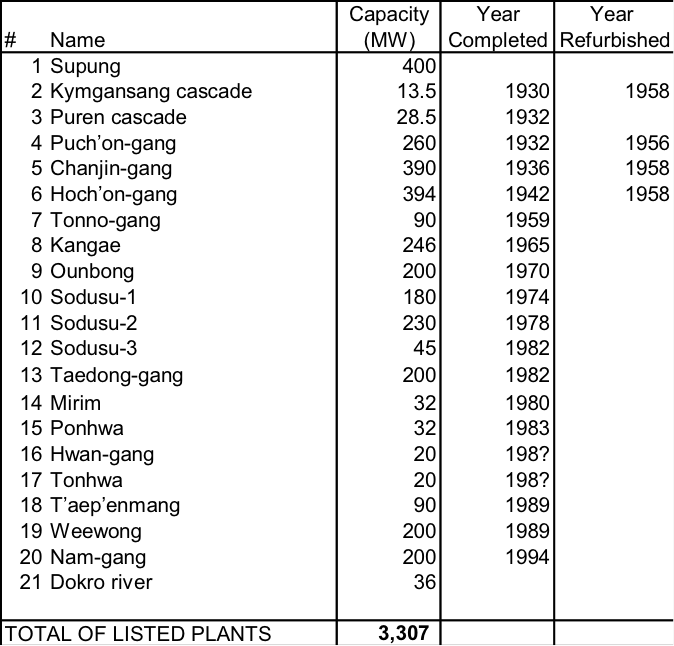
Electricity Transmission and Distribution. The unified electrical grid in the DPRK dates back to 1958. The DPRK T&D system must nominally manage a fairly complex grid of 62 power plants, 58 substations, and 11 regional transmission and dispatching centers. The substations in the DPRK are reportedly antiquated—based on obsolete Russian and Chinese technology—and also poorly maintained due largely to lack of parts and materiel. Most or all of the substations would need to be replaced, or at least substantially refurbished, to bring the DPRK grid up to modern standards.
The power grid in the DPRK operates at a nominal frequency of 60 Hz (Hertz, or cycles per second). Frequency control is poor, however, and the actual frequency on the system often reportedly falls to 50 Hz or below. Both China and Russia have electricity systems that operate at 50 Hz, while the grid in the Republic of Korea operates at 60 Hz. This difference means that in order to interconnect the DPRK grid with the Chinese and/or Russian grid, it will either be necessary to convert from 60 Hz to 50 Hz or from 50 Hz to 60 Hz at the intersection of the power grids. The cost of AC-DC-AC systems of the size that would be required for such conversion was estimated to be on the order of US $125 million per GW of capacity as of the late 1990s.
Petroleum Refining. The DPRK has two major oil refineries. Crude oil imported from China via a pipeline is refined in the DPRK’s 29,000 barrel per day (bpd, or about 1.45 million tons/yr) Chinese-designed refinery in the northwest DPRK, built in the late 1950s, and designed to use Chinese crude oils[4]. We estimated that it operated at about 35 percent of capacity in recent years. The DPRK’s other major refinery, the Sungri Oil Refinery is located in the town of Unggi, on the East Coast close to the Russian border and near Sonbong, has a reported capacity of 42,000 bpd (about 2.1 million tons/yr. The refinery was built in around 1968 by the Soviet Union, and expanded in 1970. The Sungri refinery has reportedly not operated for most of the last decade, but may have refined a small amount of Russian oil in recent years.
Coal Mining Infrastructure. Major coal mines in the DPRK are located in many areas of the country[5]. There are currently several urgent problems that the DPRK coal industry must overcome, including increasing depth of mining and related problems draining underground water, a lack of power, transport equipment,mining technology and funding, a lack of attention to mine development on the part of mine managers, deterioration of mining equipment and equipment parts, as well as lack of mine support posts, a high rate of industrial accidents, and the lack of electricity for mine operations. The latter is in turn a cause of lack of power production due to the fact that most thermal power plants rely on coal supplied by coal mines, resulting in a vicious cycle connecting the problems of lack of power and the energy sources used to produce power in the DPRK.
2.2 DPRK Energy Demand and Demand Infrastructure
Overall energy use per capita in the DPRK as of 1990 was relatively high, primarily due to inefficient use of fuels and reliance on coal. Coal is more difficult to use with high efficiency than oil products or gas. Based on our estimates, primary commercial energy use in the DPRK in 1990 was approximately 70 gigajoules (GJ) per capita, approximately three times the per capita commercial energy use in China in 1990, and somewhat over 50 percent of the 1990 per capita energy consumption in Japan (where 1990 GDP per-capita was some ten to twenty times higher than the DPRK). Including biomass fuels, we estimate that total energy use in the DPRK was about 1300 PJ (petajoules, or million gigajoules) By 2000, however, estimated DPRK energy use had fallen by more than half, and our latest estimates place 2010 DPRK energy consumption at about 500 PJ, on the order of 40 percent of 1990 levels, and including a much larger fraction of biomass (non-commercial) fuels.
The industrial sector is the largest consumer of all commercial fuels—particularly coal—in the DPRK. The transport sector consumes a substantial fraction of the oil products used in the country. Most transport energy use is for freight transport; the use of personal transport in the DPRK is very limited. The residential sector is a large user of coal and (in rural areas, though more recently, reportedly, in urban and peri-urban areas as well) biomass fuels. The military sector (by our estimates) consumes an important share of the refined oil products used in the country. The public/commercial and services sectors in the DPRK consume much smaller shares of fuels supplies in the DPRK than they do in industrialized countries, due primarily to the minimal development of the commercial sector in North Korea. Wood and crop wastes are used as fuels in the agricultural sector, and probably in some industrial subsectors as well.
Figure 3, below compares estimated final energy demand by sector for the years 1990, 1996, 2000, 2005, and 2008-2010, and Figure 4 provides the same comparison of energy demand by the type of fuel[6]. In addition to the marked decrease in overall energy consumption, there are two notable features of these comparisons. First, compared to 1990, the residential sector in 2010 uses a larger share of the overall energy budget while the share of the industrial sector shrinks to a third of the total. This change is the combined result of continued reduction in fuel demand in the industrial sector, relatively constant use of wood and other biomass fuels in the residential sector, and reductions in the use of other residential fuels (notably coal and electricity) that are not as severe as the reductions experienced in the industrial sector. Second, for similar reasons, the importance of wood/biomass fuels to the energy budget as a whole is estimated to have increased dramatically over the course of the 1990s, persisting into the current decade, while the importance of commercial fuels has decreased. Increased use of wood and other stresses have resulted in significant deforestation and degradation of forest lands in the DPRK.
Figure 3: DPRK Energy Demand by Sector: 1990 through 2010
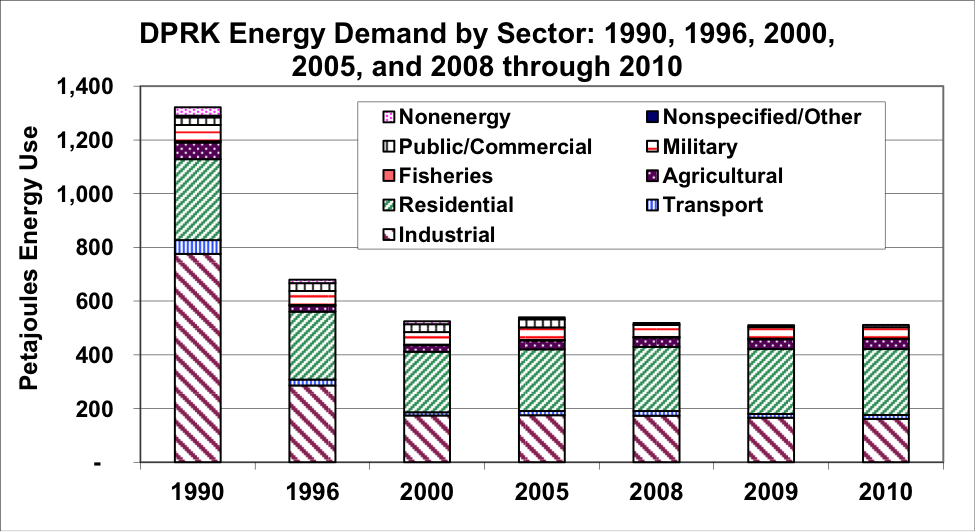
Figure 4: DPRK Energy Demand by Fuel: 1990 through 2010
3 DPRK Energy Security Situation, Needs, and Cooperation Options
3.1 Energy Security Challenges in the DPRK
Key energy-sector problems in the DPRK include:
- Inefficient and/or decaying infrastructure: Much of the energy-using infrastructure in the DPRK is reportedly (and visibly, to visitors to the country) antiquated and/or poorly maintained.
- Suppressed and latent demand for energy services: Lack of fuels in many sectors of the DPRK economy has apparently caused demand for energy services to go unmet. A significant issue with suppressed and latent demand for energy services is that when supply constraints are removed there is likely to be a surge in energy use as consumers increase their use of energy services toward desired levels.
- Lack of energy product markets: Compounding the risk of a surge in the use of energy services is the virtual lack of energy product markets in the DPRK. Without fuel pricing reforms, there will be few incentives for consumers to adopt energy efficiency measures or otherwise control their fuels consumption when supplies expand.
The DPRK’s energy sector needs are vast, and at the same time, as indicated by the incomplete and summary listing of problems above, many of these needs are sufficiently interconnected as to be particularly daunting to address.
3.2 Options for Energy Sector Cooperation—National
A selection of suggested energy sector technologies and processes for energy sector redevelopment in the DPRK are provided below. Most of these options—all of which, in our view, are crucial pieces of the redevelopment puzzle for the DPRK—have elements that can be implemented in the short-term (for example, capacity-building and humanitarian aid), and medium-term (for example, demonstration projects), but all, ultimately, will require a concerted program of assistance over many years[7].
The following summarizes key energy sector needs and related potential cooperation approaches.
Electricity Transmission and Distribution (T&D) Systems. The need for refurbishment and/or rebuilding of the DPRK T&D system was alluded to above. The most cost-effective approach for international and ROK assistance in this area will be to start by working with DPRK engineers to identify and prioritize a list of T&D sector improvements and investments, and to provide limited funding for pilot installations in a limited area—perhaps in the Tumen River area, in counties where key industries for earning foreign exchange (such as mines) are located, or in the Kaesong area.
Rehabilitation of Power Plants and Other Coal-Using Infrastructure: Rehabilitating existing thermal power plants, industrial boilers, and institutional/residential boilers will result in improved efficiency so the coal that is available goes further, will reduce pollutant emissions, and will improve reliability so that the lights and heat stay on longer. Accomplishing these upgrades will require a combination of training, materials (especially control systems), and perhaps assistance to set up and finance manufacturing concerns to mass-produce small boilers and heat-exchange components, particularly, in the short-term, for humanitarian applications, accompanied by a program of “weatherization” of buildings to be heated.
Rehabilitation of Coal Supply and Coal Transport Systems: Strengthening of the coal supply and transport systems must go hand in hand with boiler rehabilitation if the amount of useful energy available in the DPRK is to increase. Foreign coal industries—in the United States and Australia, for instance, as well as China and Russia—have significant expertise to assist with evaluating and upgrading coal mines in the DPRK, including improvements in mining technologies and equipment, in evaluation of coal resources, in mine ventilation systems, and in mine safety. The needs in this sector are so extensive, however, that no one should expect that substantial rehabilitation of the coal sector will happen quickly, and should be accompanied by rehabilitation of the coal transport network.
Development of Alternative Sources of Small-scale Energy and Implementation of Energy-efficiency Measures. North Koreans frequently express a keen interest in renewable energy and energy-efficiency technologies. This interest is completely consistent with both the overall DPRK philosophy of self-sufficiency and the practical necessities of providing power and energy services to local areas when national-level energy supply systems are unreliable at best. Such projects should be fast, small and cheap. Some of the key areas where the United States and partners could provide assistance are small hydro turbine-generator manufacturing, wind power, solar power, agricultural equipment efficiency measures, building envelope improvement and other measures for improving building energy efficiency, residential lighting improvements, industrial and irrigation motors, and humanitarian measures.
Rehabilitation of Rural Infrastructure. The goal of a rural energy rehabilitation program would be to provide the modern energy inputs necessary to allow DPRK Korean agriculture to recover a sustainable production level, and for the basic needs of the rural population to be met. A comprehensive rehabilitation program for rural areas would feature a combination of short to medium-term energy supplies from imports and medium to long-term capital construction and rehabilitation projects. A key component of rural infrastructure rehabilitation is rehabilitation of the agricultural sector. Improvements in consumable crop production per unit energy input is a key goal, accomplished by measures that reduce post-harvest losses and early crop consumption, and improve the timing of agricultural activities and inputs.[8] Post-harvest crop losses and early crop consumption alone have been estimated to reduce usable crop production by 20 percent in the DPRK.
3.3 Potential Options for Energy Sector Cooperation–Regional
Resolution of the DPRK nuclear issue would open opportunities for regional cooperation on energy issues that heretofore have been stymied, at least in part, by the difficulties in including the DPRK in regional projects. There remain, however, many different opportunities for developing regional energy infrastructure and for energy cooperation activities—many of which could involve the DPRK—that would potential benefit a number of regional parties on many levels. Regional links between the energy systems of Northeast Asian (NEA) nations could directly connect the DPRK with China, Russia, ROK, and possibly Japan. Some projects would be commercially viable for private investment; others sufficiently economically justified for only governments to pursue, but both could have synergistic effects on NWFZ arrangements (and vice versa). Examples of such links, which have been discussed bilaterally and, occasionally, regionally by groups from the NEA nations, include power grids interconnecting China, the DPRK, the ROK and the Russian Far East to bring Russian hydroelectric, coal, and perhaps nuclear power to (especially) the ROK and China.
In addition to international infrastructure, additional markets for all types of technologies (and services) would open as the DPRK is redeveloped. In fact, the redevelopment of the DPRK will provide a considerable opportunity to install efficient end-use equipment and renewable energy systems, as the DPRK economy (and infrastructure) will need to essentially be rebuilt from the ground up, potentially aided and financed by international programs such as Clean Development Mechanisms.
Regional cooperation options in the energy sector range from very large infrastructure projects linking many of the countries of the region, to more modest arrangements on technology sharing and capacity-building. Some of these possibilities, in brief, include[9]:
- Regional oil pipelines, carrying oil from Siberia, the Russian Far East, and even Central Asia to consumer in China, Japan, and possibly the ROK and DPRK.
- Regional natural gas pipelines have long been of interest to both Russia and the ROK, with China and Japan also seen as possible consumers..
- Electricity grid interconnections, designed mostly to allow power produced from hydro, coal, and possibly nuclear plants in the Russian Far East to be shipped to the ROK, have also been contemplated for well over a decade. Here, the DPRK could obtain “rent” from hosting interconnection transmission lines, even if for reasons of grid stability the DPRK does not initially (or for some years) receive power from the line. There are technical options (such as an AC-DC-AC converter station) for including the DPRK in a tieline from Russia to the ROK that would have ramifications as well for whether the nuclear plants at Simpo could ever be completed and brought on line. Conversely, the completion of the partly constructed LWRs at Simpo would have implications for the prospects of a Russian-Far-East-to-ROK interconnection as well.[10]
- The development of renewable energy and energy efficiency technologies have been of keen interest in many countries of Northeast Asia. Cooperation in these areas could take advantage, for example, of technology, research and development infrastructure, and financing from the ROK, Japan, and possibly the United States, mass manufacturing infrastructure, labor, and quite likely financing from China, labor from the DPRK, renewable resources in varying availability across the region, energy efficiency potential in all nations, and potentially huge combined regional markets.
- Sharing of excess oil refining capacity to avoid the need to build additional capacity elsewhere in the region.
- Cooperation on transportation infrastructure to improve access by all of the nations to markets for their goods, and to reduce the time and energy required to deliver raw materials and finished goods to market.
- Co-development of LNG import capacity by the DPRK and ROK. The ROK and DPRK could share an LNG terminal located in a suitable area relatively near the border of the two countries to serve both the Pyongyang area and, via pipeline, areas of the ROK near the border (possibly including some of Seoul). This would provide a way to finance gas import facilities in the DPRK (by selling gas to the ROK) while the DPRK’s gas distribution infrastructure and gas demand is built up.
- Cooperation on regional emergency fuel storage, including, potentially, agreements on sharing fuel storage facilities, tapping shared storage resources in the event of a supply crisis, and rules for the amount of fuel to be stored (similar to those in force in OECD countries) are all possibilities.[11]
Potential benefits to the DPRK of regional cooperation initiatives such as those above could include gaining access to energy resources that would be difficult to develop on its own, obtaining “rents” in exchange for allowing energy infrastructure to transit its territory, and obtaining better access to conventional energy, energy efficiency, and renewable energy, and related technologies, allowing the more rapid and cost-effective redevelopment of the DPRK economy. In addition, cooperation would oblige the DPRK to work with the countries of the region to negotiate access rights and fees, tariffs, and other parameters of cooperative projects. Lessons learned through those projects would help both the DPRK and the international community in subsequent interactions.
Overall, international projects involving the DPRK will be even more difficult to manage than cooperative project involving other Northeast Asian countries, which already pose significant challenges of their own—a short and incomplete list of which includes financing, the organization of ongoing management, pricing of energy goods transferred, setting and enforcement of environmental and labor standards, and arrangements for adjudicating disagreements among project partners. Involving the DPRK in such projects, however, can offer significant benefits in terms of engagement of the DPRK with the international community, even apart from their energy and economic benefits.
3.4 General Approaches for Implementation of Cooperative Projects
A number of general approaches for implementation of cooperative projects are available. Different approaches will be more applicable and possible at different stages of engagement between the DPRK and the international community. Some of the key generic approaches include training and capacity-building, energy assessments and energy planning, engagement projects in the minerals sector, helping to build centers of expertise, and pilot and demonstration projects. for each of these approaches, there are many possible variants to both the types of initiatives that can be offered and how they are carried out. The phasing of different types of projects must be thoroughly thought through in designing a comprehensive engagement program.
3.5 Potential Elements of a Cooperation Package Associated with Progress on Nuclear Weapons Agreements
Completion of one or both of the Simpo light water nuclear reactors was for many years an important issue of national pride to the DPRK, as part of the 1994 US-DPRK Agreed Framework. Although the DPRK has to some extent acknowledged that these reactors may never be completed—hence the DPRK’s independent work on a small LWR, as described below—the net value to the DPRK of the Simpo LWRs remains a marker against which future international energy assistance offers may be judged.
One possible two-LWR-equivalent “package” (albeit out of a practically infinite number of possible options), could include totals over 7 years of 1500 MWe (Megawatts of electricity) of hydroelectric plant rehabilitation. 1400 MWe of thermal power and heating plant reconstruction, 210 MWe of local wind power plus pumped-storage hydro, $0.5 billion in energy efficiency investments, 123 MW of diesels for humanitarian applications, and a small LPG terminal. This combination of elements offers the same net value in terms of inputs from abroad to the DPRK—a total of about $1300 million in discounted 2010 dollars—as would two LWR units, but is significantly more valuable in terms of the provision of energy for the DPRK economy. As shown in Figure 5, below, the two-LWR-alternative package provides energy earlier than the LWRs, and over time provides more than 15 times as much energy that can be used in the DPRK economy than do the LWRs. See the Annex to this paper for the details of this calculation.
Figure 5: Comparison of the Energy Outputs of Kumho LWR Completion (two units) versus an Equivalent-value Energy Assistance Package to the DPRK
4 Nuclear Energy in the DPRK: History, Status, Needs, and Potential Cooperation Options
4.1 History of Nuclear Energy Development in the DPRK
Starting in the 1980s, if not before, the DPRK’s domestic nuclear power program had the stated goal of using the DPRK’s uranium resource as a source of energy to augment its existing (mostly) coal and hydroelectric power plant fleet. The DPRK contracted with the former Soviet Union in 1985 to build two reactors at what later became the Simpo site on the DPRK’s eastern coast. This deal stalled over payment for the reactors, and was never completed, but the DPRK clearly linked its joining of the Nuclear Non-Proliferation Treaty with gaining nuclear power plants.
The Soviet reactors became moot when the Soviet Union collapsed. A new discussion ensued in 1991 of light water reactors in the DPRK—first in the joint ROK-DPRK nuclear talks in 1992, and then as part of the US-DPRK talks over the discrepancies in its declaration of nuclear facilities to the IAEA as to how much plutonium it produced and separated. Thus, when as a part of the US-DPRK 1994 Agreed Framework, the DPRK agreed to give up its plans for a domestically-built graphite moderated reactor that would produce more plutonium, it was with the understanding that the DPRK would receive two modern, large (1000 MWe) LWR units, to be built at Simpo in the DPRK under the auspices of the multi-nation Korean Peninsula Energy Development Organization (KEDO). At that point, the KEDO reactors, or their equivalent, became the benchmark for cooperation options in the energy sector with the DPRK (see above).
The KEDO-DPRK plan for two (or even one) 1000 MWe units ignored one very big problem: these LWRs couldn’t be used on the existing DPRK electricity T&D grid. By 1994 the DPRK grid was already in poor condition. Then (as now), the system used substations, switchgear, and control equipment equivalent to 1950s or 60s-vintage equipment in the West, and with decisions on which plants should operate when communicated by telephone and telex, rather than computerized control equipment, the grid was subject to frequent failures. Operating a 1000 MWe LWR on the grid would have been (and remains) impossible, in part because the grid is sufficiently unstable that the LWR would be shutting down regularly, requiring lengthy restarts and risking damage to the plant, but also because the DPRK power system, even if it were functioning perfectly, is simply too small, in terms of generating capacity, to allow the safe operation of a nuclear plant as large as 1000 MWe.[12] Only with two large electrical inter-ties to much larger grid systems—for example, two inter-ties to the ROK grid each capable of carrying 1 to 3 GW of power, or one each to the Russian and ROK grids, such as the inter-tie contemplated above—would the KEDO nuclear plants at Simpo have been able to operate safely.
Today, the DPRK runs a fragmented grid that we estimate has average total nationwide generation on the order of only 2000 MWe. On such a grid, smaller LWRs make sense from a technical point of view. Smaller reactors could be deployed near demand centers, supported by nearby hydro or coal-fired power plants, reducing transmission and distribution losses, and accommodating the reality of a fragmented grid.
Although the DPRK could not hope to develop the technologies for modern LWRs in a reasonable time frame without considerable outside assistance, it is building a pilot 25 MWe LWR, using older electro-mechanical systems rather than modern LWR control technologies and materials. Construction appears, from publically available satellite imagery, to be well underway as of this writing. Some have questioned how safe this small reactor will be once-completed. The main hazard from an accident at the small LWR, when operated long enough to accumulate a significant stock of radioactive fuel in the core, is radiological release after a loss-of-coolant incident in a plume that might affect mostly North Korean populations in adjacent towns.[13]
4.2 Potential Regional/International Cooperation Options for Small LWR
The unveiling, in 2010 of the DPRK’s pilot domestic light water reactor program (and uranium enrichment program) offers another avenue for engagement with the DPRK, and a new opportunity to determine whether it can be influenced to recommit to the global nuclear non-proliferation and disarmament regime.
It may be possible to collaborate with the DPRK to develop small light water reactors (LWRs) that are safe, reliable, and above all, safeguarded, and that also integrates its enrichment capacity into a regional enrichment consortium, possibly as part of a Northeast Asian Nuclear Weapon Free Zone. Such an engagement could entail provide training and institutional development to support DPRK nuclear energy activities, consistent with the DPRK rejoining/adhering to the provisions of (and enjoying the privileges of) the Non-proliferation Treaty.
One fast option to this effect would be to deploy a small barge-mounted reactor (possibly Russian) to provide power in a coastal North Korean town, and helping the DPRK to make or contribute to production of low-enriched uranium to fuel such a reactor, undertaking power system planning for the rational development of a national grid capable of supporting a fleet of small LWRs over a decade.
A second option would be to jointly design with North Korea a partly made-in-DPRK small reactor that meets international safety and manufacturing standards, possibly in a joint project with ROK LWR manufacturing firms. To deploy a fleet of such reactors in the DPRK would require an inter-Korean or multilateral financing scheme for the manufacturing and construction of small LWRs, and development of a small reactor export program as part of an inter-Korean “reunification reactor” program.
In our view, such an engagement on small LWRs should be done only accompanied by a host of other policy, economic, and humanitarian energy engagements in the energy sector, as noted above.
4.3 Potential Regional Cooperation on Uranium Enrichment
In late 2010, the DPRK unveiled its previously unannounced uranium enrichment plant at Yongbyon, with an estimated annual capacity of approximately 8000 kilograms separative work unit (kg SWU). A building was added to the Yongbyon complex in 2013 that is estimated to allow for a doubling of that capacity, to 16,000 kg SWU.[14] The international community would like to engage the DPRK to bring the enrichment facility under International Atomic Energy Agency (IAEA) safeguards.
A first step in engaging the DPRK on uranium enrichment would likely include training in safety practices, as well as agreements on international monitoring of the Yongbyon enrichment facilities. Ultimately, however, such engagement could lead to jointly researching and designing, and eventually creating, a regional enrichment consortium involving Japan, the ROK and the DPRK (among other possible partners) whereby DPRK enrichment capacities are incorporated into a safeguarded scheme, possibly operated as part of a multinational facility, in return for which the DPRK would reveal all of its enrichment acquisition history and would provide full access to its enrichment sites for inspection and application of safeguards to standards already accepted by other states that would be party to a Northeast Asian Nuclear Weapons-Free Zone, or to a side agreement on nuclear energy cooperation to such a Zone treaty.
4.4 Potential Regional Cooperation on Spent Fuel Management
It is at this point unknown what the DPRK’s plans are for spent fuel management, but the current and future management of radioactive materials from nuclear energy facilities in Northeast Asia in general is a topic of serious concern and a necessary component of discussions on a Nuclear Weapons-free Zone (NWFZ) in the Koreas and Northeast Asia.
Spent fuel inventories in the ROK and Japan (and Taiwan) are rapidly filling at-reactor pool space and the few existing intermediate storage facilities. China’s younger reactor fleet has more spent fuel space, and an interim storage facility is under construction. At least preliminary discussions and design of permanent disposal facilities in Japan, the ROK, and China are underway, but siting of such facilities, particularly in the ROK and Japan, will be difficult.
Although we acknowledge that a potential collaboration with the DPRK that involves any transfer of nuclear materials into or out of the DPRK will be controversial, some form of cooperation on spent fuel management will be necessary and can offer benefits to Japan and the ROK. Involving the DPRK could build some confidence between the countries of the region and eventually set the stage for cooperation on permanent storage/disposal of nuclear wastes when reliable waste isolation options emerge.
As such, potential regional cooperation on spent fuel management involving the DPRK could include:
- Regional assistance to the DPRK, with IAEA oversight, on best practices for spent fuel management, including training in nuclear materials handling and transfer of safety equipment, assistance with planning and implementing disposal for existing DPRK nuclear wastes, training on the use of dry cask storage, and cooperation on regional spent fuel management research topics potentially leading toward the ultimate disposal of nuclear materials, including those below.
- Establishment of regional intermediate spent fuel storage and disposal facilities such as centralized repositories located in one of the NWFZ countries, with international management combined with a regional monitoring and verification system on fuel inventories in such schemes to assure participants that no nuclear materials are diverted. International monitoring of dispersed intermediate storage facilities is also possible, although current laws in the ROK and Japan impede siting and construction of intermediate storage; and/or
- After 2030 (that is, when spent fuels are sufficiently cooled and disposal technologies sufficiently advanced), establish permanent regional waste disposal sites, including “deep borehole disposal” whereby spent fuel, high-level wastes, and possibly separated plutonium, diluted and immobilized in inert material, would be placed in holes drilled 3 to 5 km into stable rock strata[15].
From a geological, as well as economic, perspective, it is not impossible that the DPRK could be involved as a host in one or both of regional intermediate or deep-borehole spent fuel management facilities, in large part because it is likely that the transfer of nuclear materials to a regional spent fuel facility is realistically at least two, and more likely, three, decades into the future, which provides time for engagement, training, and other cooperation activities to lay the groundwork for regional implementation of such facilities.
5 Conclusions
We conclude that helping the DPRK to implement sustainable solutions to its long-term energy problems is a necessary, though not sufficient, condition for enduring success in getting the DPRK to give up or place under international oversight its nuclear weapons, nuclear materials, and nuclear weapons programs, in to join a NWFZ. Conversely, failing to address the DPRK’s underlying needs for energy services now unmet (or poorly met) will virtually guarantee that any solution to the nuclear weapons issue will be unachievable and unsustainable.
The options for such a sustainable solution are to develop small and large scale conventional energy supply options, both domestic-DPRK and regionally networked, to assist with renewables and demand-side management (energy efficiency) options; and to develop nuclear fuel cycle support and possibly joint, safe small LWR options. We suggest that the salient benchmark for the scale of such assistance would be the financial net gain that completing the two KEDO 1GWe LWRs would have provided to the DPRK. We are skeptical that the KEDO LWR project itself will be resumed and completed, both because the United States and its partners are unlikely to agree, but also because the DPRK itself may have decided that the KEDO approach is no longer viable, given the mismatch of such large reactors with its now fragmented and relatively small power grid.
Engagement options that involve energy efficiency and renewable energy initiatives are generally “robust” for application in the DPRK, fulfilling many different considerations with few “downsides”. One aspect of such options that should not be overlooked, however, is that they will require a good deal of organization and coordination per unit of cost—relative, say, to work on a single major power plant, or provision of tankers of heavy fuel oil. This requirement has many benefits, in terms of capacity-building and intercultural interactions, but will need good communications between the groups providing assistance, and between those groups and their DPRK counterparts, to be effectively implemented and administered. Patience and consistency on the part of all parties in developing and implementing these and all cooperation options will also be vital.
Larger-scale options involving regional energy networks that contribute to regional economic integration, as well as economic integration of the Koreas, may have significant benefits, but will likely be candidates for longer-term application. They have the advantage that they are based on projects that are inherently economic from the perspective of regional participants, and which also provide some benefit to the DPRK, rather than projects that treat the DPRK as a separate energy problem to be solved solely in terms of local energy economics onto which are superimposed geo-strategic imperatives related to nuclear weapons by all parties.
Generally, we suggest that smaller, local projects that entail extensive human capacity-building will generate more development and more political good-will than very large, long-term projects. . Considering the energy import/export needs and goal of regional players—such as the Russian Far East, China, and the ROK, will help planners to understand how to best integrate the DPRK into the regional energy economy while avoiding problems in doing so. This will take careful, site-specific and project-specific joint design, including access to sites and information that the DPRK has hitherto been loath to provide.
The DPRK’s interest in and current efforts to develop nuclear energy systems cannot be overlooked in developing plans for energy sector engagement. There are approaches to regional nuclear cooperation, starting with capacity-building on nuclear safety and related issues, that could, over the next two to three decades—and assuming favorable political conditions—build toward integrating the DPRK with other nations in the region in cooperative nuclear energy projects that support the goals of the NWFZ with regard to transparency of nuclear materials handling and non-proliferation of nuclear weapons materials.
III. ANNEX: Selected Calculations for an Example “Energy Assistance” Package of Similar Value to the DPRK as the KEDO LWRs
IV. References
* Title image: NASA/ISS
[1] See, for example, David von Hippel, and Peter Hayes (2012), Foundations of Energy Security for the DPRK: 1990-2009 Energy Balances, Engagement Options, and Future Paths for Energy and Economic Redevelopment, dated 18 December 2012, and available as https://nautilus.org/napsnet/napsnet-special-reports/foundations-of-energy-security-for-the-dprk-1990-2009-energy-balances-engagement-options-and-future-paths-for-energy-and-economic-redevelopment/; and David F. von Hippel and Peter Hayes, An Updated Summary of Energy Supply and Demand in The Democratic People’s Republic Of Korea (DPRK), published as Hanyang University Center for Energy Governance and Security Working Paper 2014-2, and available from http://www.egskorea.org/sub/sub2_2.asp and as https://nautilus.org/napsnet/napsnet-special-reports/an-updated-summary-of-energy-supply-and-demand-in-the-democratic-peoples-republic-of-korea-dprk/.
[2] Please see von Hippel and Hayes, 2012 (reference above) for a listing of the sources used in developing this table.
[3] Please see the volume of detailed calculations provided as an Attachment to von Hippel and Hayes, 2009, for a listing of the sources used in developing this table.
[4] Fridley, D. (1996), Lawrence Berkeley National Laboratory (personal communication).
[5]This information is largely taken from the report by Edward Yoon (2012) commissioned by Nautilus, Status and Future of the North Korean Minerals Sector can be found as http://nautilus.wpengine.netdna-cdn.com/wp-content/uploads/2011/12/DPRK-Minerals-Sector-YOON.pdf.
[6] The quantitative estimates of DPRK energy supply and demand provided below are based on the most recent (2010 base year) Nautilus DPRK energy sector analysis, a summary of which will be provided later in 2013 in a forthcoming Working Paper prepared for the Energy, Governance and Security Center of Hanyang University. The most recent DPRK energy sector analysis published by Nautilus is Von Hippel David and Peter Hayes (2012), Foundations of Energy Security for the DPRK: 1990-2009 Energy Balances, Engagement Options, and Future Paths for Energy and Economic Redevelopment, Dated 18 December 2012, The Nautilus Institute for Security and Sustainability, available as https://nautilus.org/napsnet/napsnet-special-reports/foundations-of-energy-security-for-the-dprk-1990-2009-energy-balances-engagement-options-and-future-paths-for-energy-and-economic-redevelopment/.
[7] For a more detailed presentation of how energy sector assistance activities for the DPRK might be phased, see David von Hippel and Peter Hayes (2009), DPRK Energy Sector Assistance to Accompany Progress in Denuclearization Discussions: Options and Considerations, prepared for the project “Improving Regional Security and Denuclearizing the Korean Peninsula: U.S. Policy Interests and Options”, October, 2009. Available as https://nautilus.org/wp-content/uploads/2012/01/vonHippel.pdf.
[8] Hugh Bentley, “Trends in the DPRK Agricultural Sector & Implications for Energy Use”, presentation prepared for the DPRK Energy Experts Working Group Meeting, June 26th and 27th, 2006, Palo Alto, CA, USA). Available as http://nautilus.wpengine.netdna-cdn.com/wp-content/uploads/2012/01/Bentley.ppt.
[9] For more comprehensive treatments of these topics, please see David von Hippel and Peter Hayes, “Future Northeast Asian Regional Energy Sector Cooperation Proposals and the DPRK Energy Sector: Opportunities and Constraints”, in ERINA Report, Volume 82, July, 2008, available as http://www.erina.or.jp/en/Publications/er/pdf/Er82.pdf; and David von Hippel, Ruslan Gulidov, Victor Kalashnikov, and Peter Hayes, “Northeast Asia Regional Energy Infrastructure Proposals”, Asian Energy Security Special Section of Energy Policy, Volume 39, Number 11, November, 2011 Pages 6855–6866, and available as http://dx.doi.org/10.1016/j.enpol.2009.08.011.
[10] The reader is urged to consult the many papers presented during the 2001, 2002, and 2003 Workshops on Power Grid Interconnection in Northeast Asia, hosted by Nautilus and its partners in Beijing and Shenzhen, China, and in Vladivostok, Russia, respectively. These papers provide background both in regional interconnection proposals and on the many different issues affecting and potentially affected by Northeast Asian grid interconnections. See https://nautilus.org/projects/by-name/asian-energy-security/workshop-on-power-grid-interconnection-in-northeast-asia/. Recent years have also seen discussions of moving electricity generated from renewable (wind and solar) resources in Gobi area of Mongolia to buyers in China, Japan, and the ROK. .
[11] See, for example, Eui-soon Shin (2005), “Joint Stockpiling and Emergency Sharing of Oil: Update on the Situations in the ROK and on Arrangements for Regional Cooperation in Northeast Asia”, prepared for the Asian Energy Security Workshop, May 13-16, 2005, Beijing, China, and available as http://www.nautilus.org/aesnet/2005/JUN2205/Shin_Stockpile.ppt.
[12] See J. Bickel (2001), “Grid Stability and Safety Issues Associated with Nuclear Power Plants”. Prepared for the Workshop on Power Grid Interconnection in Northeast Asia, Beijing, China, May 14-16, 2001, and available as http://www.nautilus.org/projects/asian-energy-security/workshop-on-power-grid-interconnection-in-northeast-asia/papers/Bickel.pdf/at_download/file.
[13] See David F. von Hippel and Peter Hayes (2014), Illustrative Assessment of the Risk of Radiological Release from an Accident at the DPRK LWR at Yongbyon, NAPSNet Special Reports, May 06, 2014, https://nautilus.org/napsnet/napsnet-special-reports/illustrative-assessment-of-the-risk-of-radiological-release-from-an-accident-at-the-dprk-lwr-at-yongbyon-2/. A first description of the DPRK LWR effort is provided in Siegfried S. Hecker (2010), A Return Trip to North Korea’s Yongbyon Nuclear Complex, NAPSNet Special Report, dated November 22, 2010, and available as http://www.nautilus.org/publications/essays/napsnet/reports/a-return-trip-to-north-korea2019s-yongbyon-nuclear-complex.
[14] See, for example, David Albright and Robert Avagyan (2013), Recent Doubling of Floor Space at North Korean Gas Centrifuge Plant: Is North Korea doubling its enrichment capacity at Yongbyon?, dated August 7, 2013, and available as http://isis-online.org/uploads/isis-reports/documents/Yongbyon_fuel_facility_7Aug2013.pdf
[15] Suitable locations for deep borehole disposal exist in most of the nations of the region, with the possible exception of Japan. See, for example, von Hippel, D., and P. Hayes (2010), Deep Borehole Disposal of Nuclear Spent Fuel and High Level Waste as a Focus of Regional East Asia Nuclear Fuel Cycle Cooperation, NAPSNet Special Report, December, 2010, available as https://nautilus.org/wp-content/uploads/2012/01/Deep-Borehole-Disposal-von-Hippel—Hayes-Final-Dec11-2010.pdf; and Jungmin KANG (2010), An Initial Exploration of the Potential for Deep Borehole Disposal of Nuclear Wastes in South Korea, Nautilus Institute Report, December, 2010, available as http://nautilus.wpengine.netdna-cdn.com/wp-content/uploads/2011/12/JMK_DBD_in_ROK_Final_with_Exec_Summ_12-14-102.pdf.




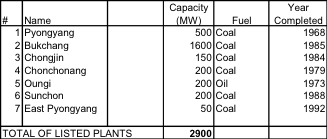
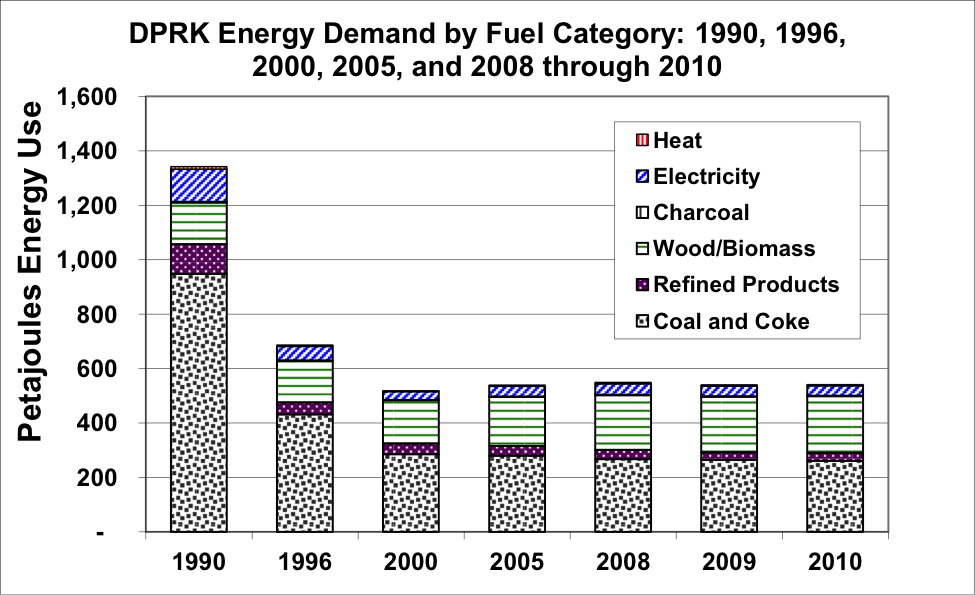
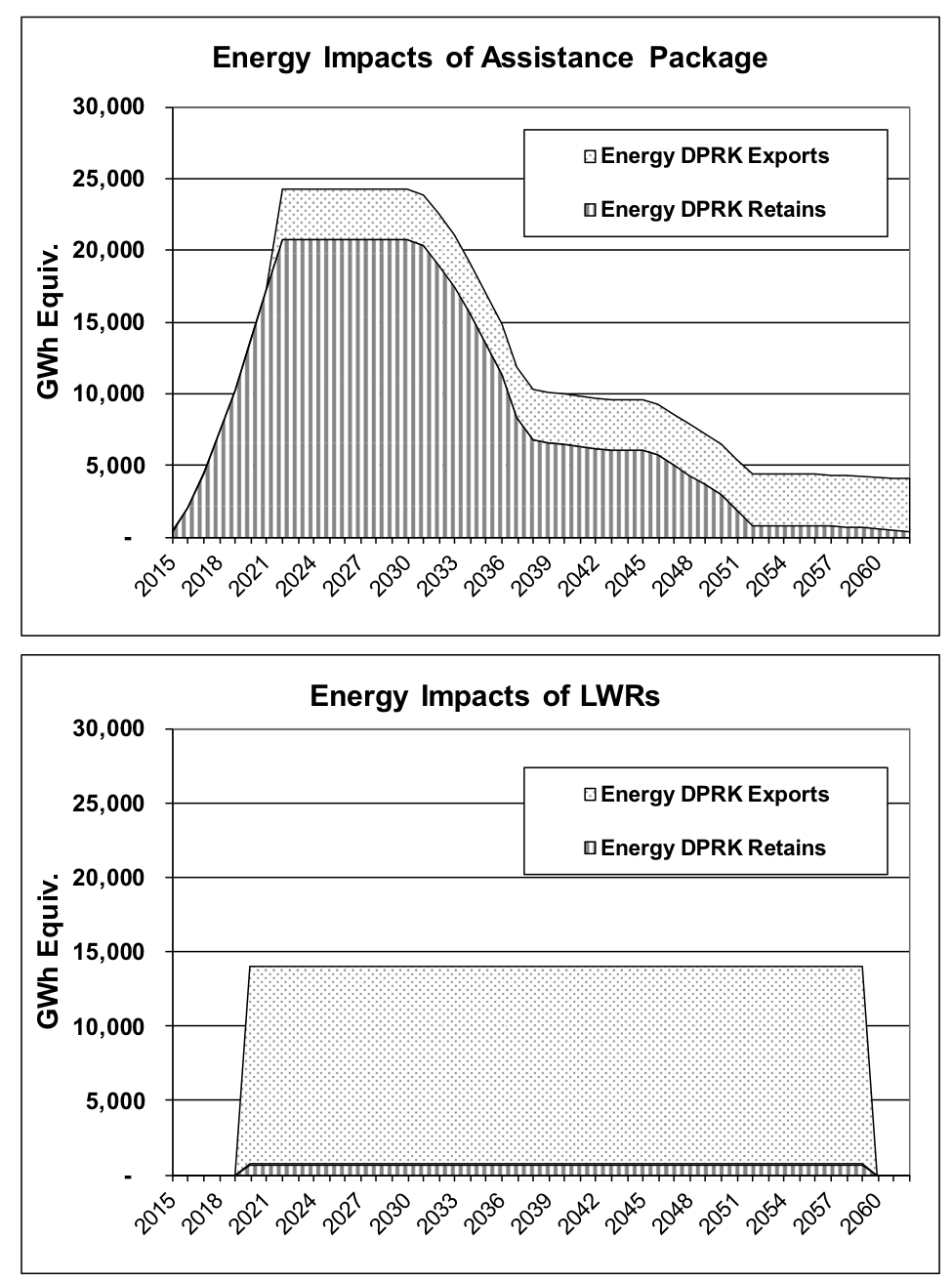
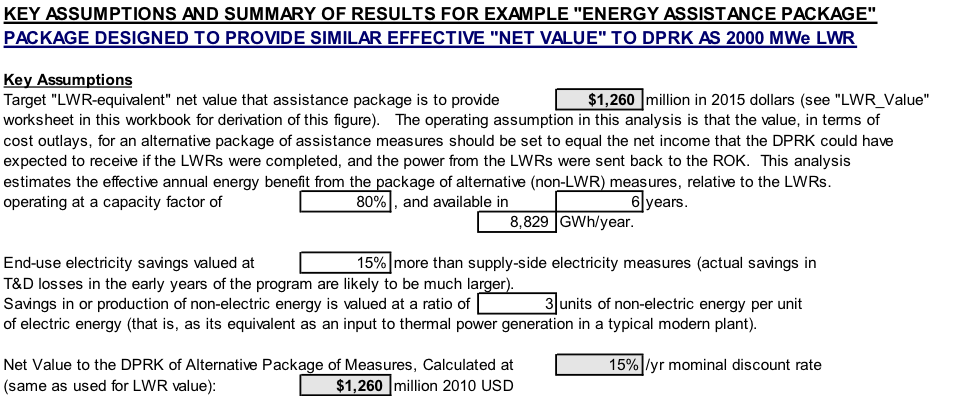

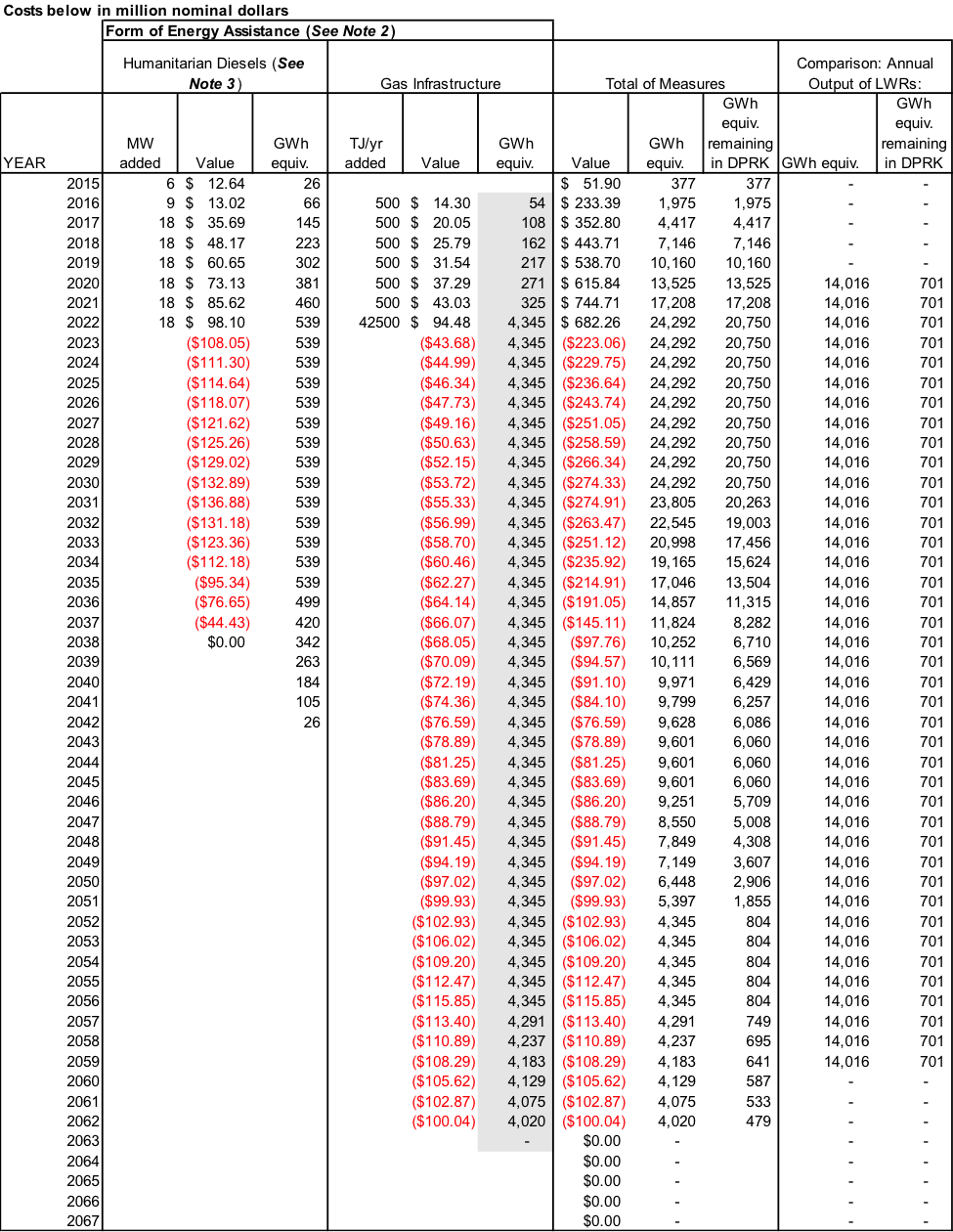
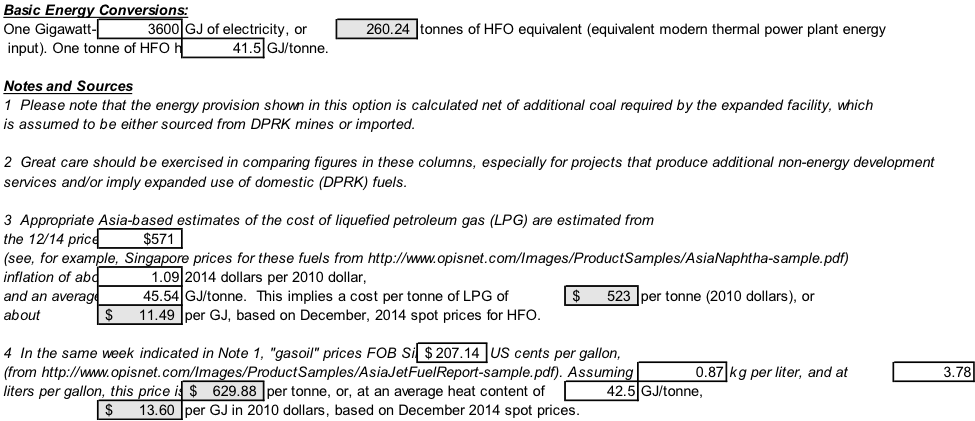
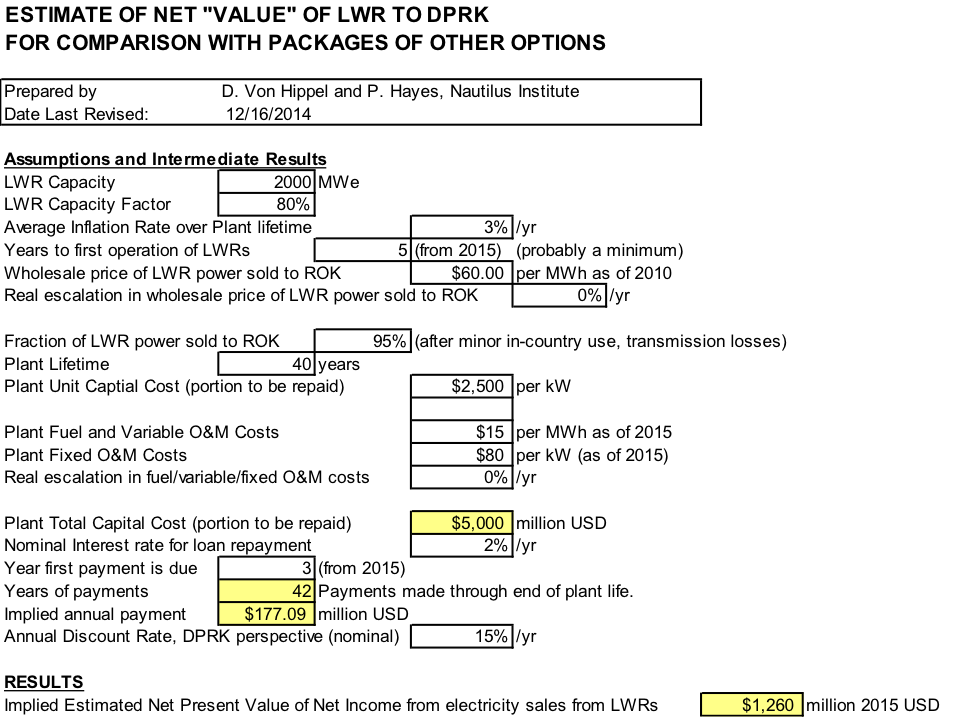
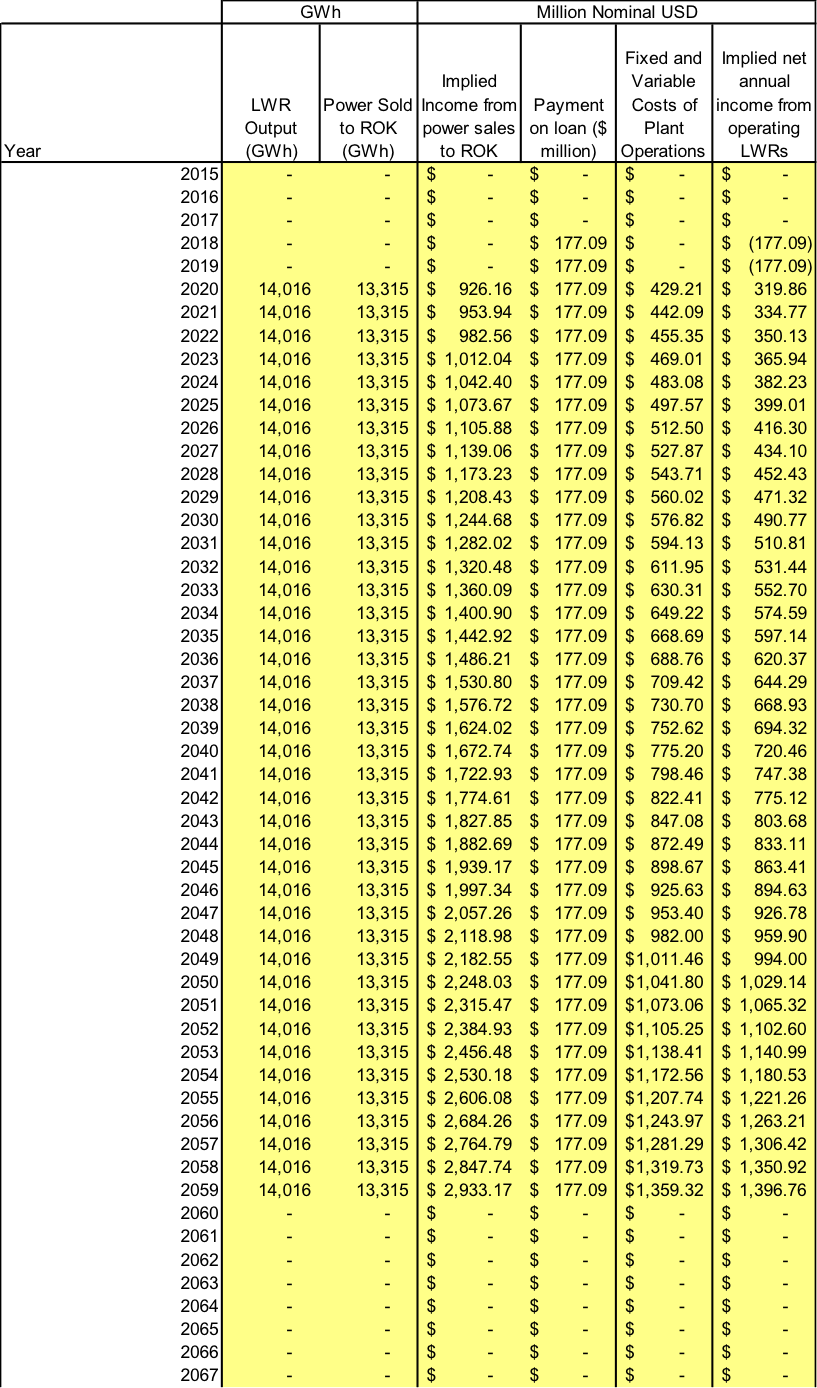
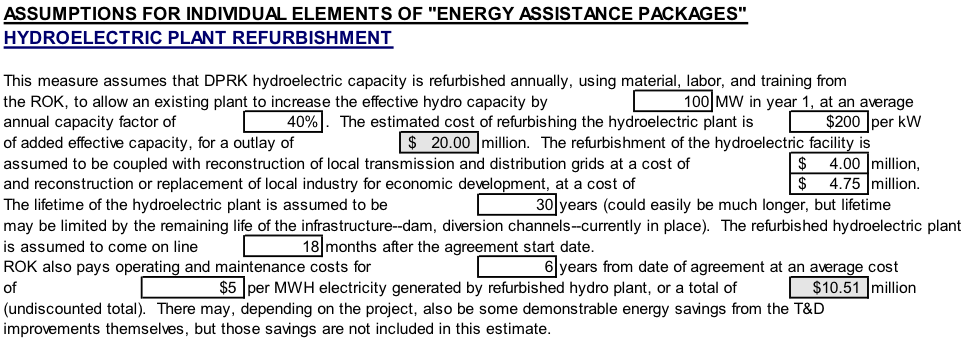
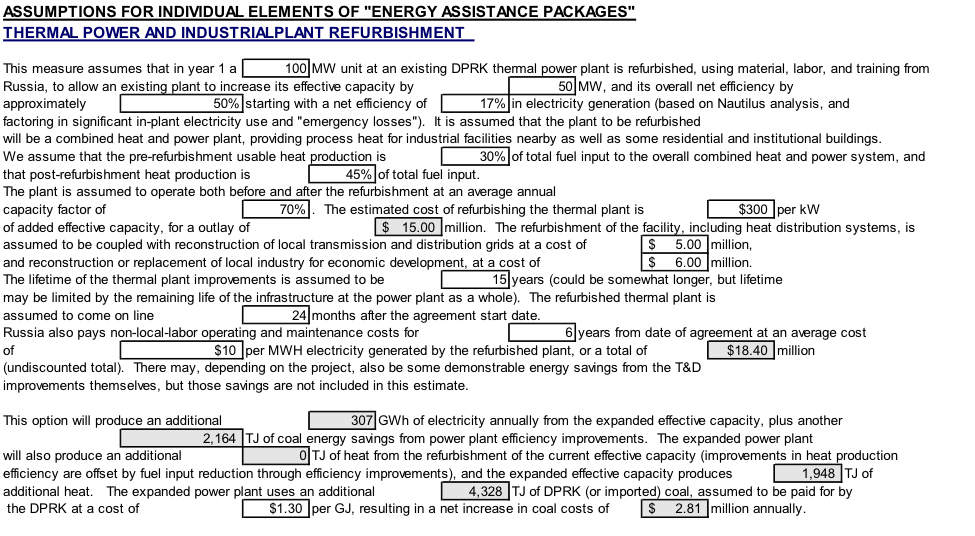
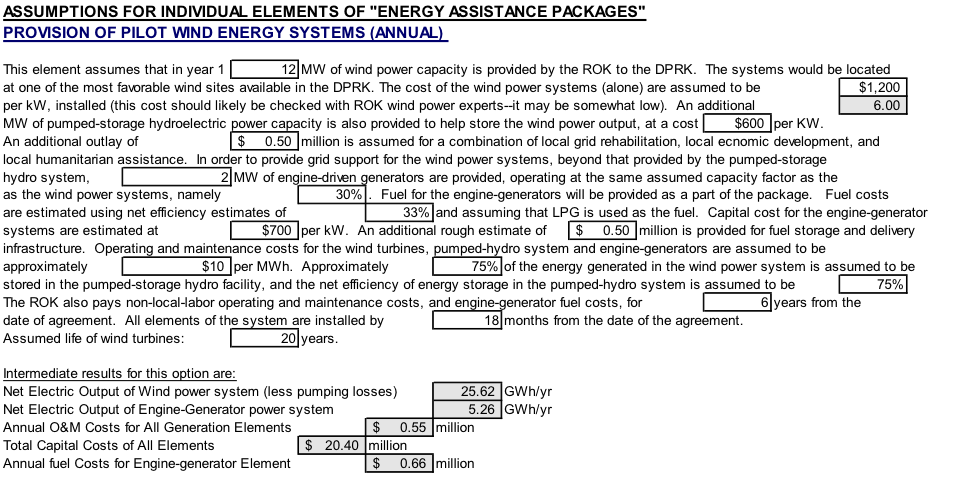
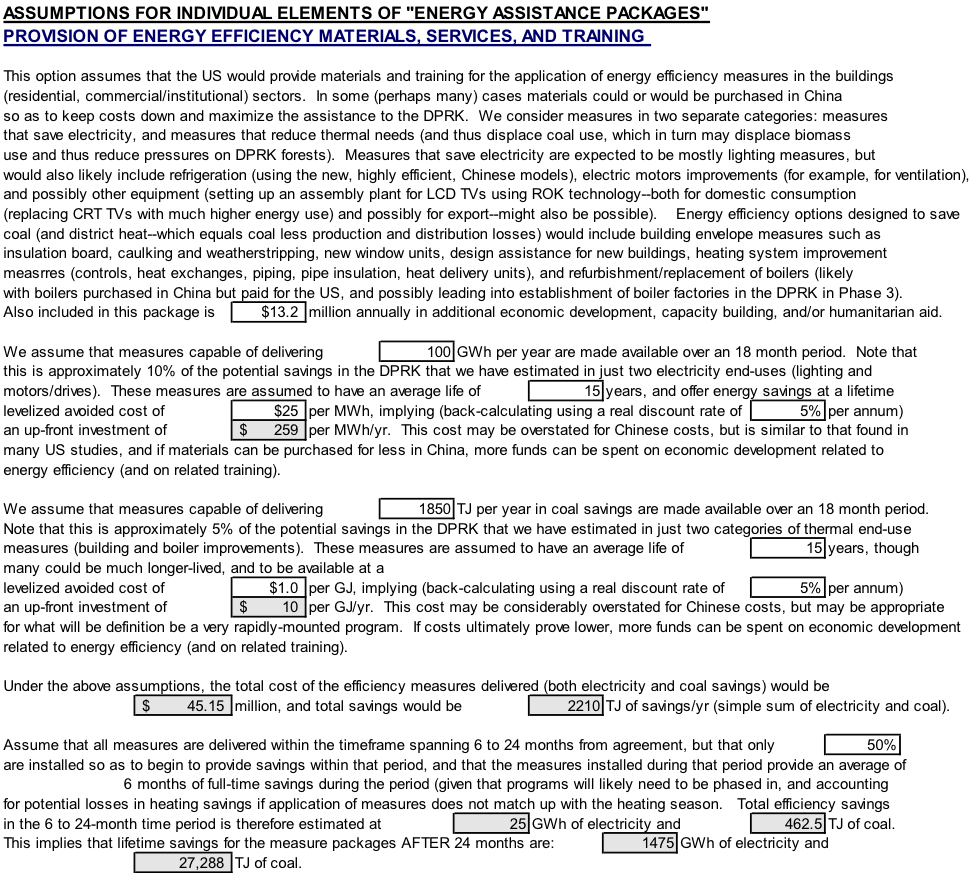
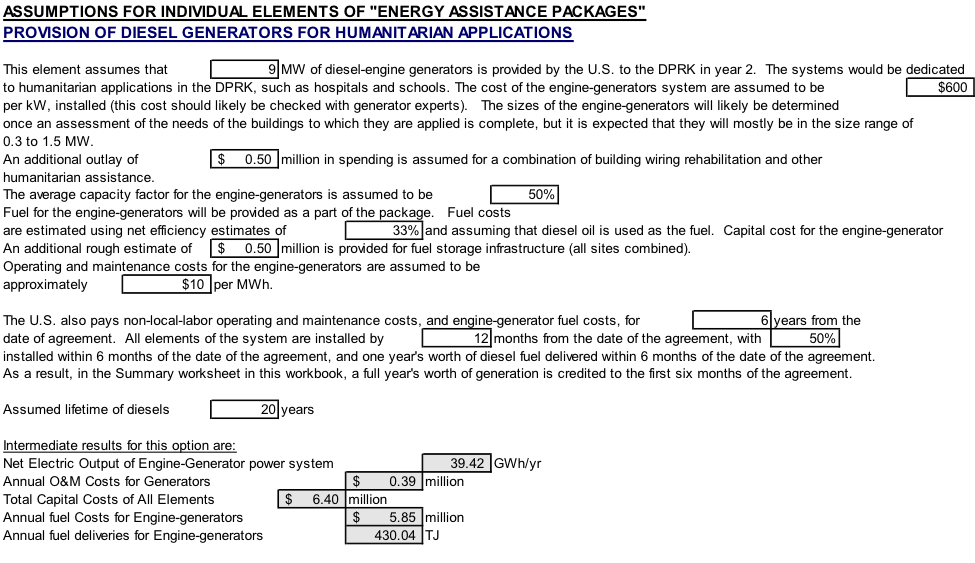
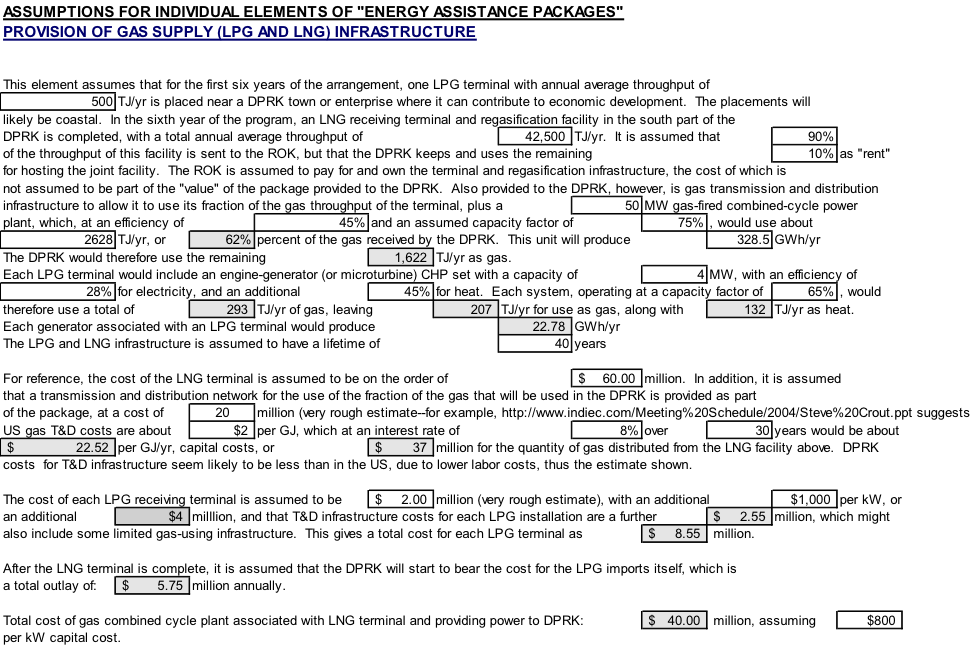
One thought on “Energy sector cooperation with the DPRK in support of a regional Nuclear Weapons Free Zone”